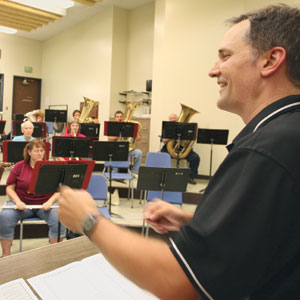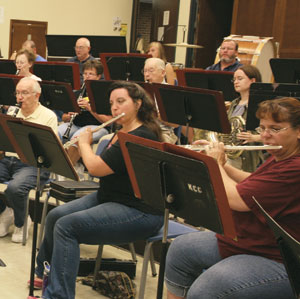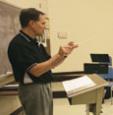Every director has expectations of his ensemble members. However, ensemble members also have expectations of their director. Directors who pay attention to these will have happy players as well as better sounding groups.

1. Have a plan. Nothing is more frustrating than to feel that your time is being wasted. Directors should always have a schedule for rehearsal and share this with ensemble members. In addition, there should be a plan for each piece. Do not waste time flipping through pages on the podium; know in advance which sections you would like to rehearse. A rehearsal plan need not be cast in stone. If you reach a trouble spot and decide it needs more work, that is fine, but that time will have to be taken from another part of rehearsal.
2. Be aware of the time. Students have someplace to be after rehearsal, and there is an obligation to stick to the rehearsal schedule. Make sure there is a clock someplace where you can glance at it discreetly. Many conductors place a watch or a cell phone on their stand. The more confidence students have that you will manage time appropriately, the less need they will feel to watch the clock.
3. Never talk with the baton at the ready. When you raise your baton it is a signal that a downbeat is coming quickly. Instruments come up, and the ensemble focuses sharply on your hands. However, there is a limited amount of time for which students can maintain this focus. If a downbeat does not come within five seconds, the entrance will not be tight because the level of attention has diminished; it is impossible to maintain a position of anticipation for more than a few seconds.
Doing this repeatedly will condition students not to pay attention because it isn’t worth their effort to focus. It takes quite a bit of retraining to get an ensemble at this point to come in crisply. However, a director who is consistent about always giving a downbeat immediately after raising the baton will have an ensemble that comes in together.
4. Never stop without giving a reason. If an ensemble is asked to repeat a section, they will want to know what they did wrong the first time. Students want to play well, but they can’t fix anything if they don’t know what’s wrong. Asking an ensemble to simply repeat a section over and over without any indication of what the problem is or what is expected is unhelpful.
5. Don’t make promises you don’t keep. Avoid saying, “We’re going to run this piece straight through” and then stopping the group once they’ve started. Likewise, don’t ask anybody to play a passage “one last time” and then make them do it again. Broken promises do not build trust. One way around this is to add vague words to such statements. Instead of “one last time,” say, “I hope this will be the last time”; instead of “Let’s run this straight through,” say, “Let’s try to run this straight through.”

6. Look up when you speak. People pay more attention to someone who is looking at them. If your face is buried in the score while you’re talking, it signals to the ensemble that what you are saying is of no concern to them. Also, in a large rehearsal room it is easier for players far from the podium to understand what you say when they can see your mouth.
7. No one joined to listen to you talk. Keep comments short and avoid repeating yourself. Although some joking is fine, pauses of more than 30 seconds should be rare. One common pitfall is a laundry list of instructions. Even if there are 12 important things to say, the ensemble will have forgotten the first point by the time you get to the last.
I once took a stopwatch to a community band rehearsal to time how much the group played in an hour. At this rehearsal the band played for 13 minutes and listened to the conductor for 47. It is difficult to believe that the band improved more than they would have if these numbers had been reversed.
8. Record your rehearsal and watch the entire tape. Many directors do this to check their conducting technique, but it is worth watching yourself give instructions to the ensemble as well. If the ensemble’s focus is wandering, it may be necessary to make some changes in the way instructions are given. The above guidelines should help.






